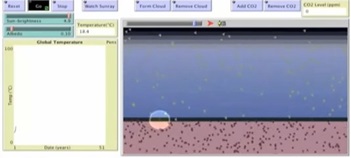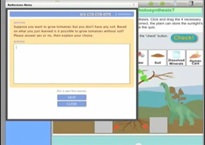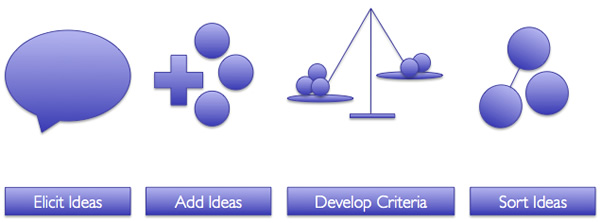Web-Based Scientific Inquiry
A scenario
Justin has been teaching Chemistry for years and is willing to adopt using different approaches. One approach is called STSE (Science Technology Society Environment). No matter which topic he introduces, the lesson always begins with something related to daily life: a news article, video clip, real object, or problem that is meaningful to students. He uses these to elicit discussion among the students. He knows that science is difficult for many students, and he believes that Students should develop scientific understanding through integrating their prior understanding with scientific information and revising their understanding.
Justin was often looking to rich curriculum resources, and he found a very rich online resource database on teaching science (WISE). Through the use of the Iinternet, students can have access to different scientific topics and problems and inquireing into complex scientific problems. Students can follow structured guides and prompts, but carry out their investigations independently. In other words, they do not merely rely on the teacher and textbook. WISE uses many simulation models and visualizations to make abstract scientific concepts accessible to science students. Using these tools, Justin trains up students critical thinking and scientific inquiry skills, rather than believing students have these from the very beginning.


Definition
Web-Based Scientific Inquiry (knowledge integration framework) is an instructional model to enhance science teaching in secondary school classrooms.
Web-bsed scientific inquiry has also been studied as the process of incorporating new information into a body of existing knowledge with an interdisciplinary approach. This process involves determining:
-
how the new information and the existing knowledge interact;
-
how existing knowledge should be modified to accommodate the new information;
-
how the new information should be modified in light of the existing knowledge.

Figure 1. Knowledge Integration (source: http://telscenter.org/files/img/ki.jpg)
Basic Assumptions and Principles
The framework is organised around four principles to promote knowledge integration (see Linn, Davis, & Bell, 2004, chap. 3):
-
Making science accessible for students
-
Making thinking visible for students: Technological supports such as visualisations, films, models, and simulations can describing how students recognise new ideas, and reorganise and connect new and prior ideas.
-
Providing social supports for students: Collaborative learning situations such as discussions and debates can be designed so students offer explanations, interpretations, and resolutions supported by a peer or a scientist
-
Promoting lifelong science learning: Students are asked to identify weaknesses in arguments and question the validity of the scientific information presented. These activities allow students to link their real world experiences with scientific concepts taught in school, and prompt students to make the links between spontaneous and instructed ideas
Classroom Implication and Teaching Strategies
Research by TELS Director Marcia C. Linn at University of Berkeley and others has shown that instruction is most effective when teachers
-
Use students’ views as a starting point for investigating scientific phenomena
-
Guide learners as they
-
articulate their repertoire of ideas
-
add new ideas
-
sort out these ideas in a variety of contexts
-
make connections among ideas at multiple levels of analysis
-
develop more nuanced criteria for evaluating ideas,
-
formulate a linked set of views about the phenomena
-
TELS, from the University of California at Berkeley, has been developed along the lines of knowledge integration theory
Resources
-
Linn, M. C. (2006) The Knowledge Integration Perspective on learning and instruction. R. Sawyer (Ed.). In The Cambridge handbook of the Learning Sciences. Cambridge, MA. Cambridge University Press.
-
Linn, M. C., Davis, E. A., & Bell, P. (Eds.) (2004). Internet environments for science education. Mahwah, NJ: Lawrence Erlbaum Associates.
-
Slotta, J. D., & Linn, M. C. (2009). WISE science: web-based inquiry in the classroom. New York, NY: Teachers College Press.